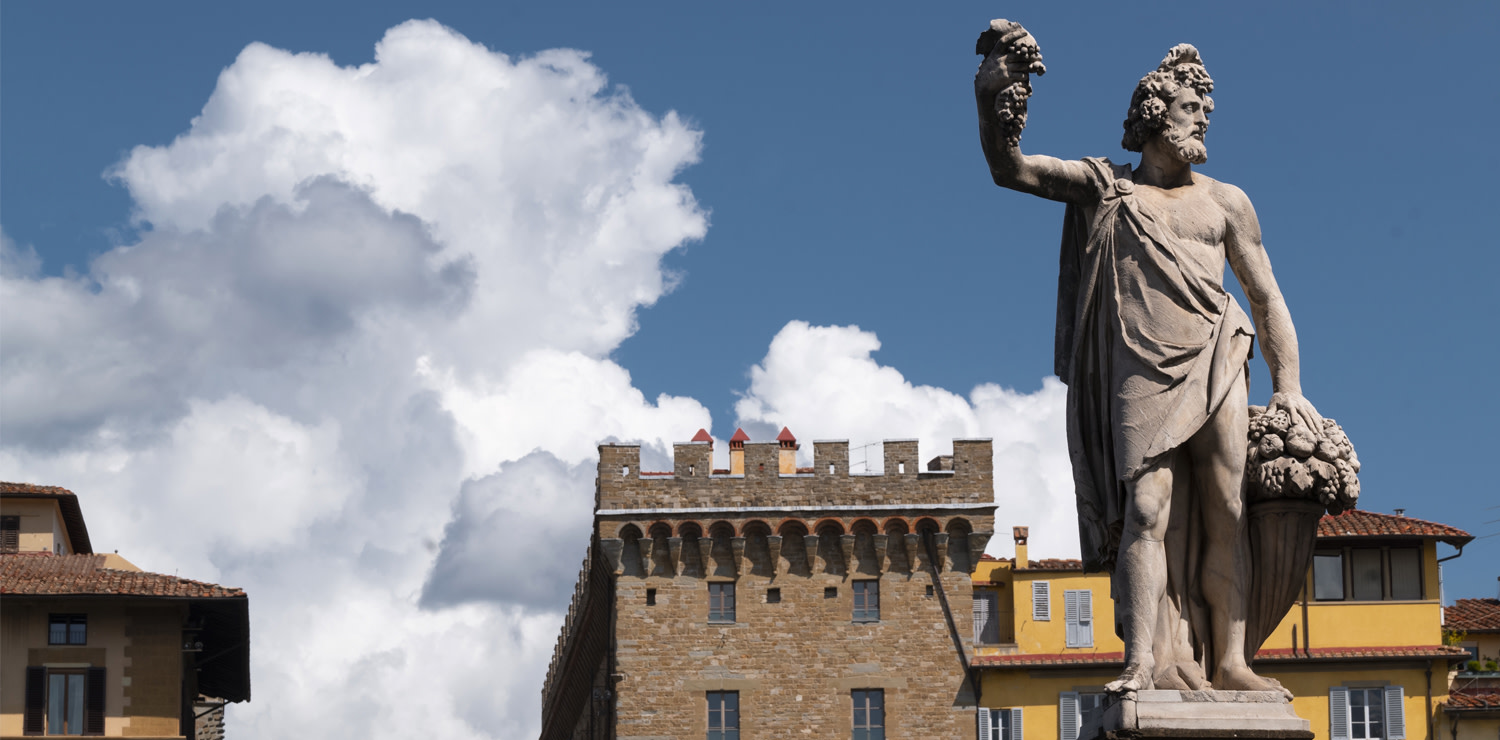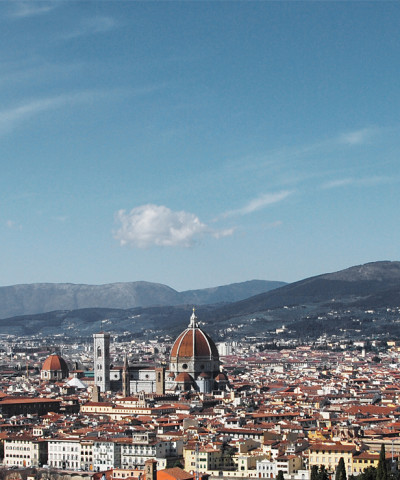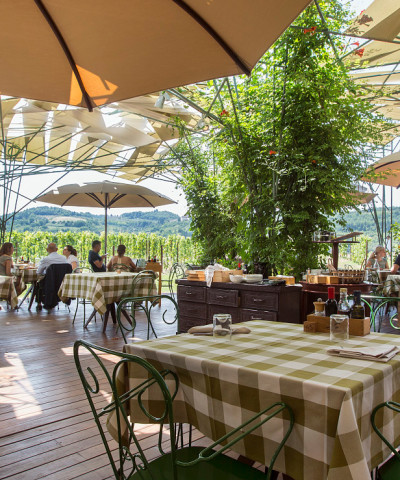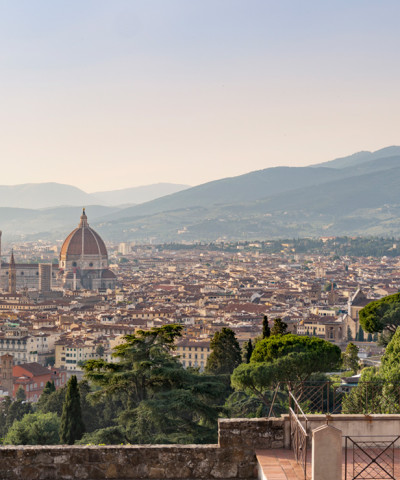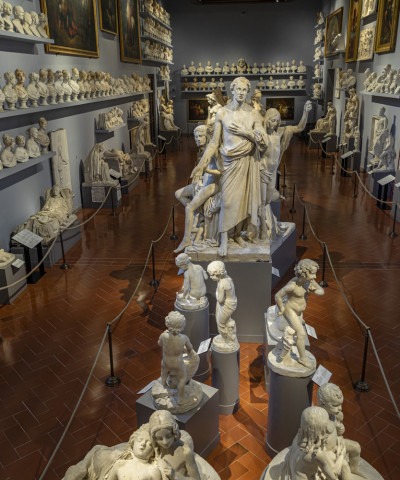The 20 monuments not to be missed in the center of Florence
An unforgettable walk immersed in the masterpieces of the city
Florence is an open-air museum. That's why we have created an itinerary in the heart of the city to discover all its wonders.
It starts from here: with its dome, the Cathedral of Santa Maria del Fiore is the most iconic of Florence's monuments. Together with the nearby baptistery and the bell tower, it forms one of the most valuable architectural complexes of the Italian Renaissance. Begun at the end of the 13th century by Arnolfo di Cambio, the Duomo of Florence was completed two centuries later with its extraordinary dome: 46 meters in diameter and beautiful, it is an architectural and engineering masterpiece by Filippo Brunelleschi. It was commissioned on April 16, 1420, after many controversies and contrasts, and it was started on August 7 of the same year to be finally completed 16 years later. The white, green and red marble facade is in the style of Giotto's 14th century bell tower.
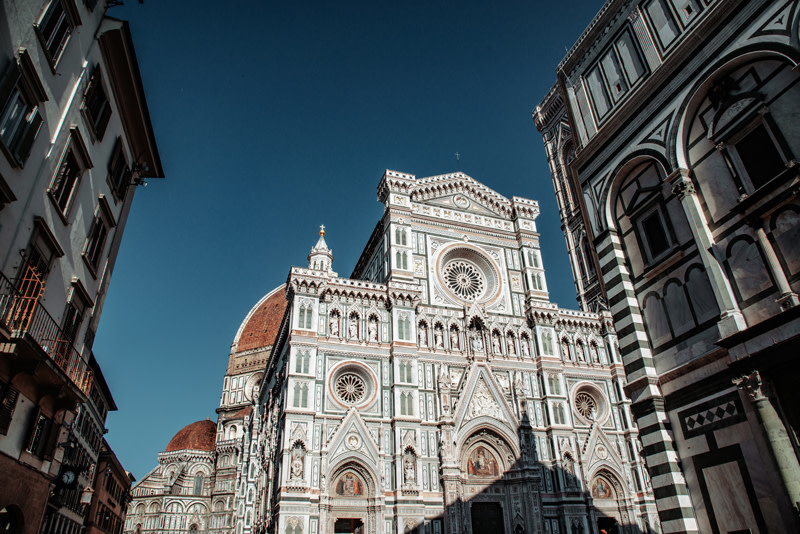 Santa Maria del Fiore (ph. Ottavia Poli)
Santa Maria del Fiore (ph. Ottavia Poli)Giotto's bell tower
At first glance it looks like a whole with the Duomo, actually the bell tower is in Gothic style and was completed in 1359. Designed by Giotto, at the time master builder of the Fabbrica del Duomo, the tower is 85 meters high, divided into five floors, covered with polychrome marble and valuable bas-reliefs by Andrea Pisano and Luca della Robbia. Climb the over 400 steps that lead to the top and you can admire a spectacular view of the city and Brunelleschi's dome.
Built in the 12th century to house the baptismal font of the Cathedral, the Baptistery is a magnificent octagonal building of perfect proportions culminating in a pyramidal roof. Like the Cathedral and the Bell Tower, its facades are covered with white Carrara marble and green Prato marble, enriched by three doors finely decorated with bronze bas-relief panels. The south door, by Andrea Pisano, shows scenes from the life of St. John the Baptist. But the real wonder is the Door of Paradise, which faces the Cathedral, considered the absolute masterpiece of Lorenzo Ghiberti for its refinement. Damaged during the flood of Florence, the original panels, after being restored, are preserved in the nearby Museo dell'Opera del Duomo.
Ponte Vecchio
Symbol of the city, is the most famous bridge over the Arno, it is also the only one that was not destroyed during World War II. Casket of the most famous goldsmiths of the city, these small charming stores flank the central passage. Above them, on the east side, runs the famous Vasari Corridor (currently closed but in which we give you an unprecedented tour).
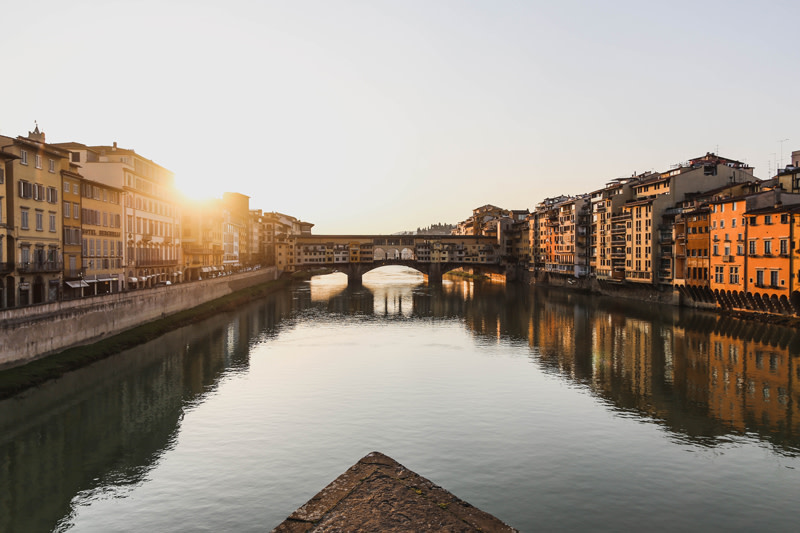 PONTE VECCHIO, ph. Giuseppe Mondi
PONTE VECCHIO, ph. Giuseppe MondiSanta Trinita Bridge
The other bridges easily reachable if you are in the center are Ponte alle Grazie, Ponte alla Carraia and last but not least Ponte Santa Trinita, famous for its beautiful sunsets and for being at the center of a late 19th century painting by Henry Holiday entitled Dante and Beatrice. The painting by the English painter Henry Holiday refers to an episode of the Vita Nova and reproduces Dante on the Ponte di Santa Trinita that meets three women: the one in the center is Beatrice, "the one who 'mparadisa la mia mente" - Paradiso, canto XXVIII. The original, made by Bartolomeo Ammannati, was destroyed during the Second World War. The present one was rebuilt in 1958, with the authentic statues of the Four Seasons placed at the two entrances.
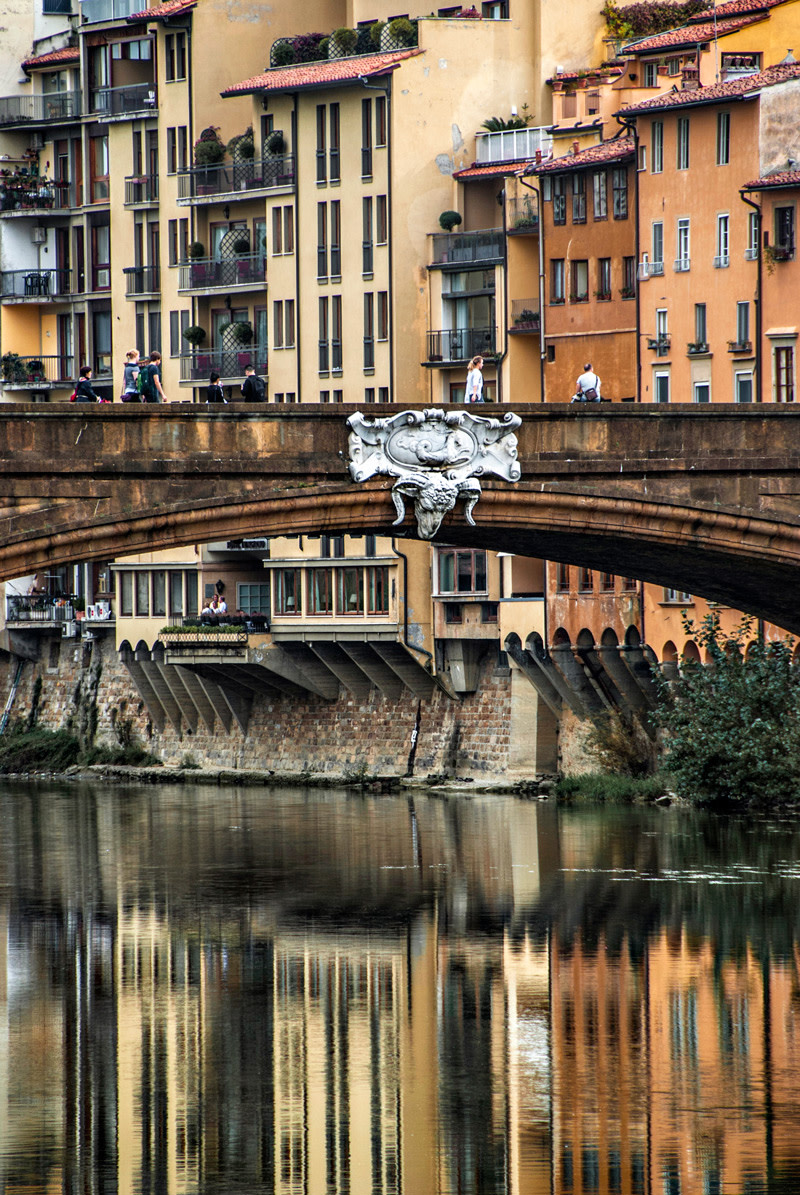 Ponte Santa Trinita, ph. Lorenzo Cotrozzi
Ponte Santa Trinita, ph. Lorenzo CotrozziUffizi Lodge
The niches under the arcades of the Uffizi Gallery were originally designed by Vasari as purely architectural elements, while Cosimo I would have liked sculptures of "Florentines who were clear and illustrious in their weapons, letters and civil governments". It happened only in the first half of the nineteenth century on the initiative of the printer Vincenzo Batelli (1786-1858) were occupied by 28 marble statues of famous people from the world of politics, art, literature, science, judiciary and even religious figures. Among the most famous people, we meet Cosimo il Vecchio, Lorenzo il Magnifico, great representatives of the Medici family; artists such as Giotto, Donatello, Leonardo da Vinci, Michelangelo; the greats of literature Dante, Petrarca, Boccaccio, Machiavelli; men of science and adventure, such as Galileo Galilei, Amerigo Vespucci and others. Among the sculptors who created the works, we remember Bartolini, Duprè, Pio Fedi, young talents of the time.
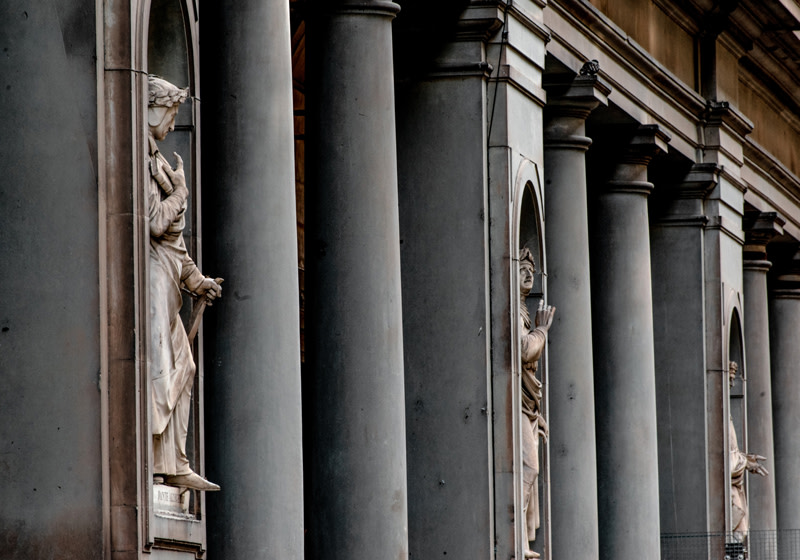 Loggiato degli Uffizi, ph. Ottavia Poli
Loggiato degli Uffizi, ph. Ottavia PoliVasarian Corridor
The elevated corridor that joins the Uffizi to Palazzo Pitti was built by Giorgio Vasari for Cosimo I de' Medici and runs for about a kilometer above the city and the river, enters the palaces, encircles the Torre de' Mannelli, overlooks the Church of Santa Felicita and arrives in Pitti and Boboli. While waiting for the new layout that will bring it back to its original function as a link between the Uffizi and Palazzo Pitti, admire it from below along our walk (expected opening in the first half of 2023).
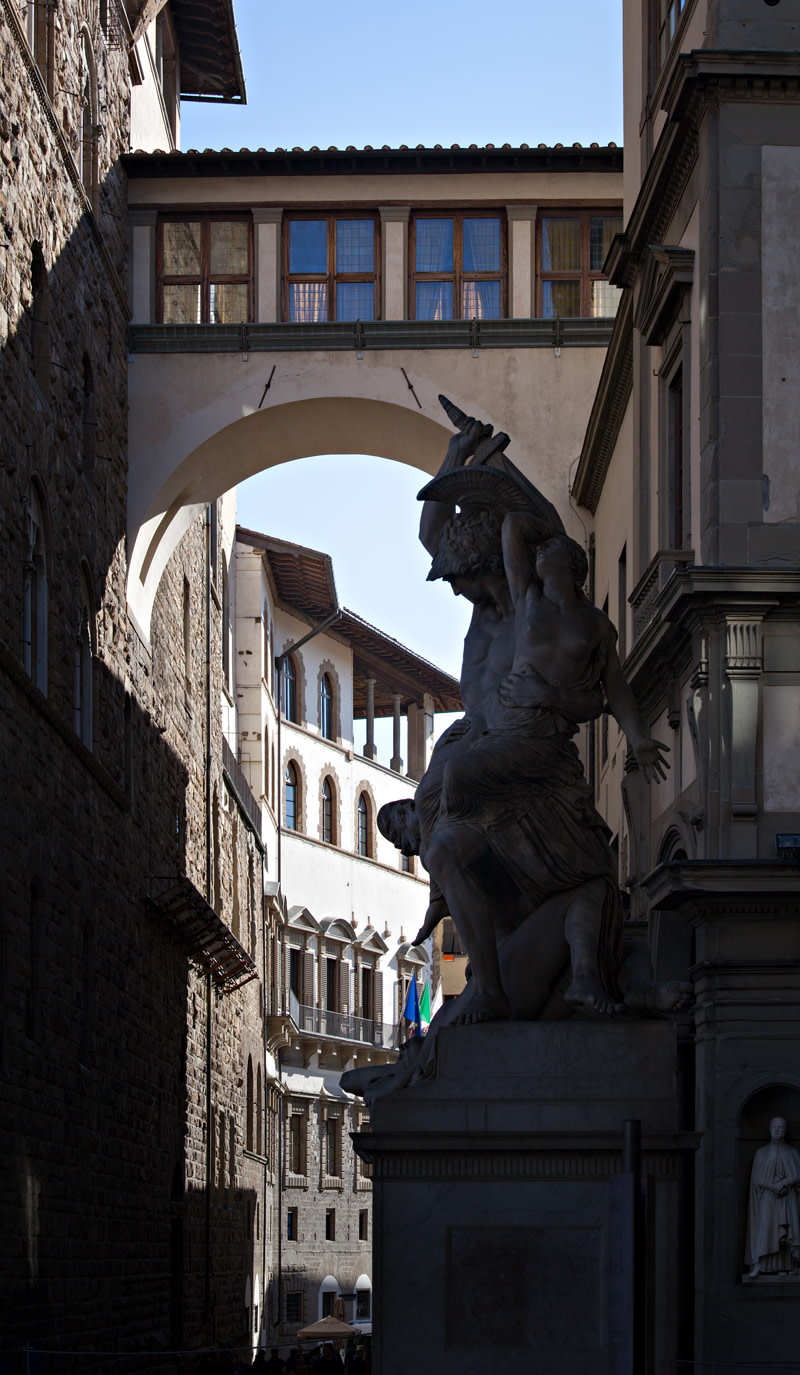 Corridoio Vasariano, ph. Letizia Francini
Corridoio Vasariano, ph. Letizia FranciniNeptune Fountain
It is the first public work of the city, wanted by Cosimo I to celebrate the Medici's conquests in the maritime field and stands in Piazza della Signoria, on the corner of Palazzo Vecchio. The majestic Neptune in white Carrara marble, affectionately called Biancone by the Florentines, is the work of Bartolomeo Ammannati and stands on a chariot pulled by four horses and surrounded by a court of bronze sea gods. In addition to Ammannati, numerous sculptors participated in the complex of the work, with an approach based on materials that are different in nature and color, dear to the client's taste. The result was the object of harsh criticism right from its completion, while today it is read as an emblematic example of the renewal of Mannerist sculpture shortly after the mid-16th century, in opposition to Michelangelo's prevailing academicism.
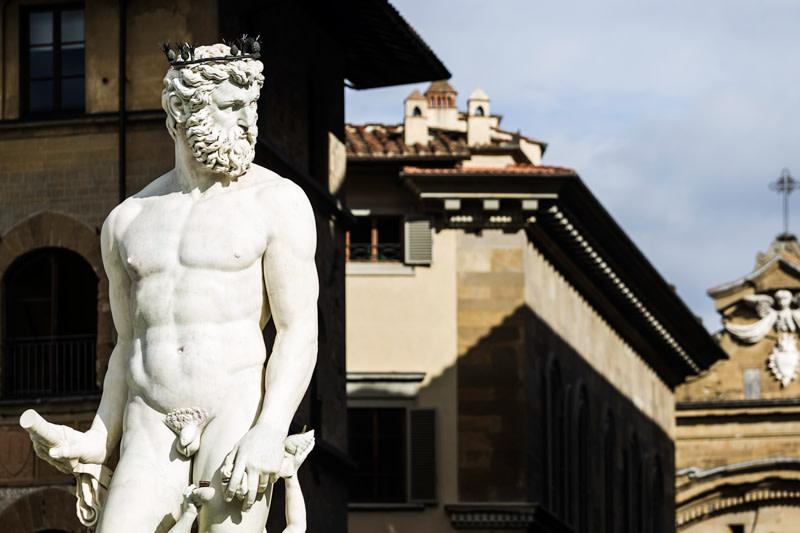 Nettuno Fountain
Nettuno Fountain Statue of Hercules and Cacus
Coming from the Uffizi, it is the first of the large statues arranged on the arengario of Piazza della Signoria, in front of Palazzo Vecchio. It depicts the victory of the hero over the monstrous being and was made on the occasion of the return of the Medici to the government of the city.
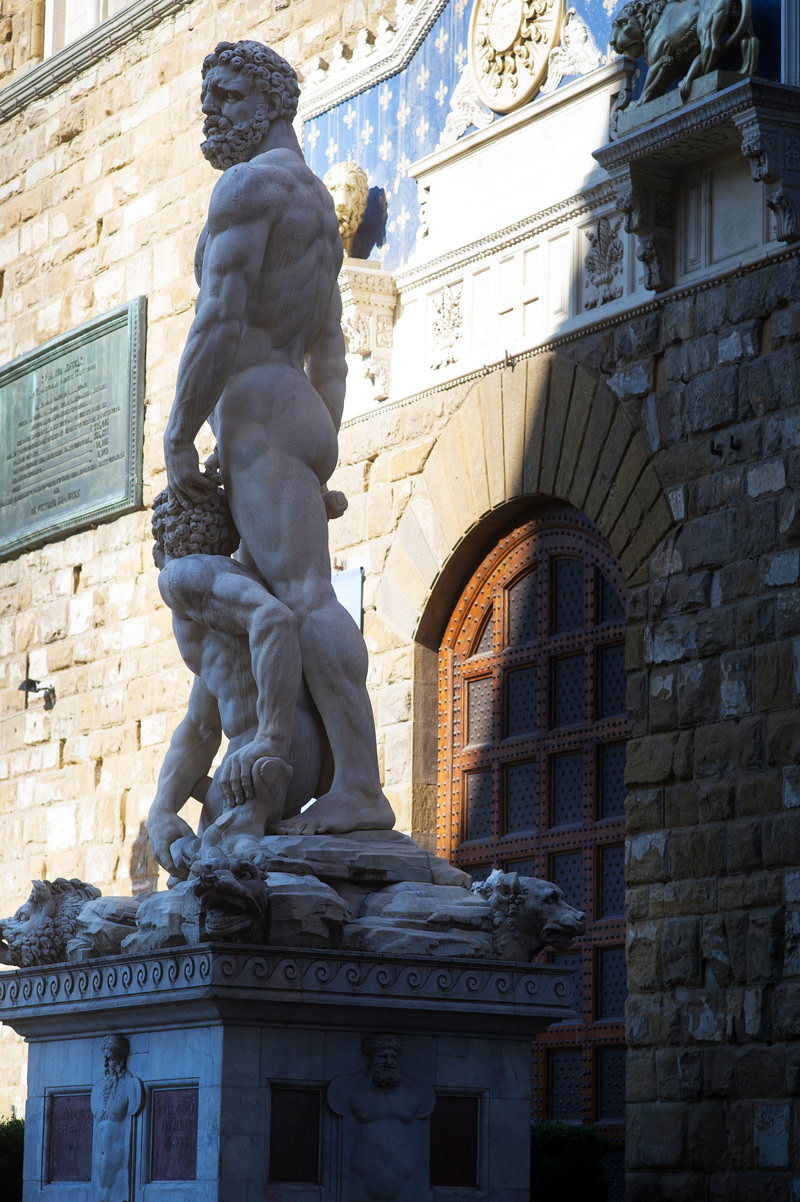 Statue of Ercole e Caco, ph. Dario Garofalo
Statue of Ercole e Caco, ph. Dario GarofaloJudith and Holofernes
The original of Judith and Holofernes is dated 1457: signed by Donatello, it is kept in the Sala dei Gigli in Palazzo Vecchio. The bronze copy of Judith and Holofernes has a place of honor on the arengario of Palazzo Vecchio for its great symbolic value: it represents in fact the victory of virtue over evil.
Statue of Marzocco
The Marzocco, the lion symbol and protector of Florence is between the Judith and the Fountain of Neptune. He represents him with his paw on a shield with the Florentine lily. In Piazza della Signoria there is a copy of Donatello's sculpture from 1419. The original is kept at the Bargello.
David by Michelangelo
The original of this masterpiece can be found in the Academy Gallery. A copy was placed in Piazza della Signoria in 1910, while we find a copy prior to Piazzale Michelangelo. It dates back to June 25, 1873 and was towed by nine pairs of oxen. Although they do not have the pathos of Michelangelo's masterpiece, the copies do not lack charm. if you are already in front of Palazzo Vecchio, the walk to get to Piazzale Michelangelo is a beautiful itinerary in the greenery of the city.
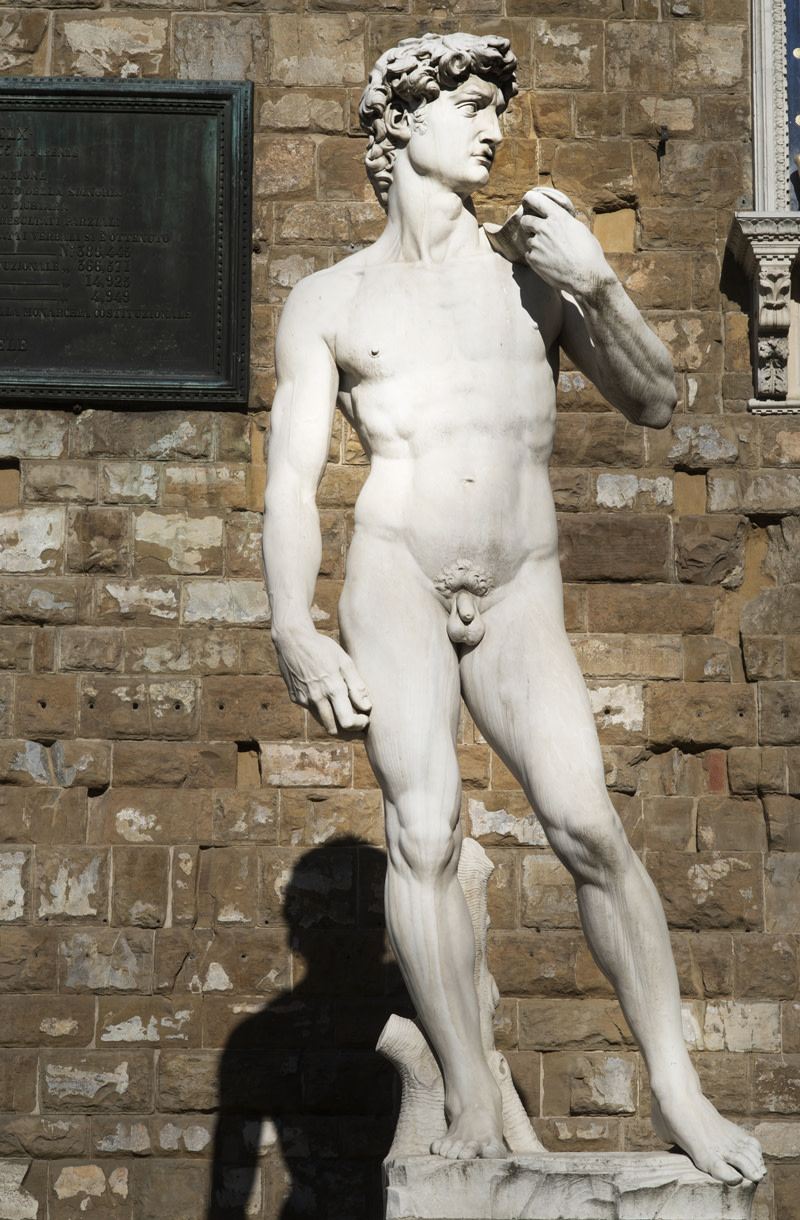 David, ph. Dario Garofalo
David, ph. Dario GarofaloLoggia dei Lanzi
On the southern side of Piazza della Signoria, this 14th century gallery is one of the most interesting examples of Florentine Gothic architecture. Called Loggia dei Lanzi because once the Lansquenets found shelter there, since the 16th century it is practically a museum of Renaissance sculpture en plein air, including statues such as the Perseus with the head of Medusa (1554) by Benvenuto Cellini, the Rape of the Sabine Women (1580) and Hercules and the Centaur Nexus (1598) by Giambologna, the Rape of Polyxena by Pio Fedi and the Roman statue in marble Patroclo and Menelao of the first century AD.
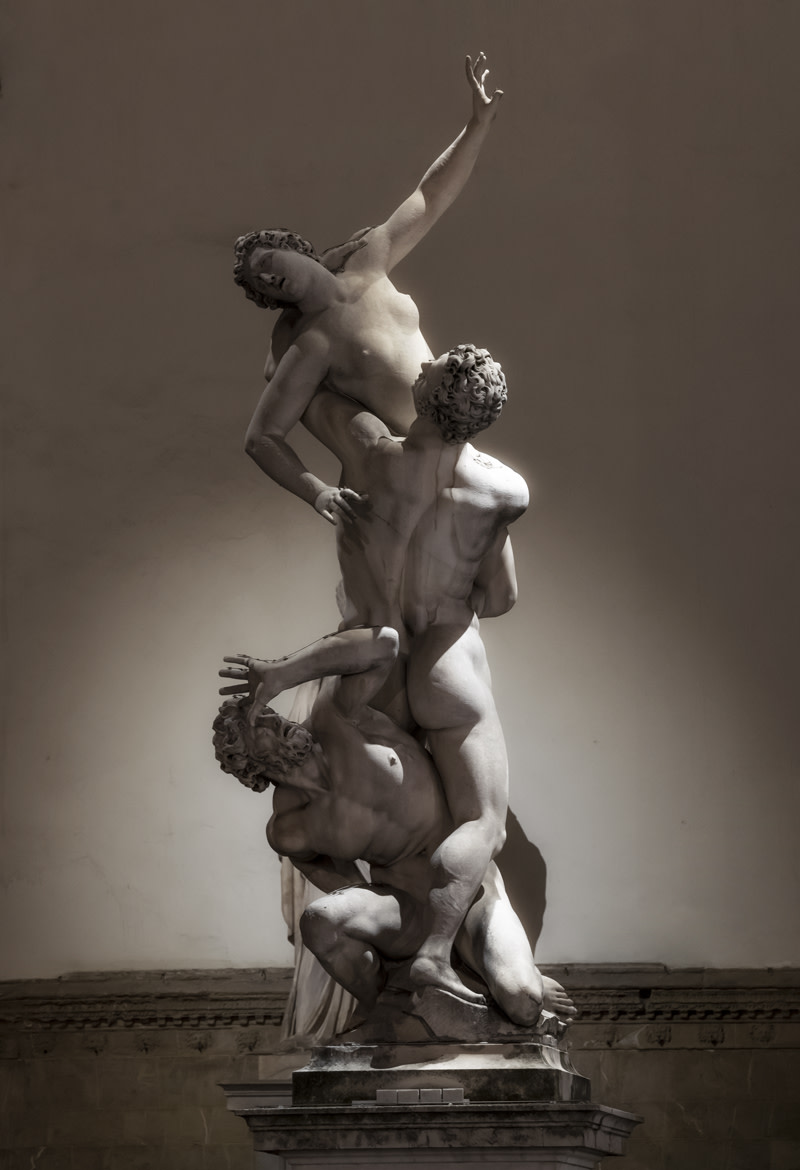 Ratto delle Sabine, ph. Lorenzo Cotrozzi
Ratto delle Sabine, ph. Lorenzo CotrozziPiglet Fountain
Here more than prestige counts good luck: it seems that a stop at the 17th century Fontana del Porcellino, located at the Loggia del Mercato Nuovo, to caress the nose of the bronze boar would bring good luck.
Loggia del Mercato Nuovo
The harmonious structure on the corner of Via Porta Rossa and Via Calimala, also called Loggia del Porcellino, was built in 1547 by Cosimo I to house what is considered one of the oldest Florentine markets. Still under its vaults there is a tourist market of leather goods and handicrafts. At the end of the nineteenth century it was decided, as for the Uffizi, to place statues of illustrious Florentines in the corner niches, but only three were actually made.
Designed by Arnolfo di Cambio, it is one of the largest Franciscan churches and one of the greatest Gothic achievements in Italy. Originally the facade was unfinished, as in many Florentine basilicas. The exposed pietraforte wall was very similar to what can still be seen in San Lorenzo. In the fifteenth century the Quaratesi family had come forward to finance the construction of the facade entrusting it to Simone del Pollaiolo. The condition was, however, that the Quaratesi coat of arms appeared well in view in the center of the main front, but this request discouraged the Franciscan friars from accepting the proposal. The present facade was realized between 1853 and 1863 by the architect Niccolò Matas, who was inspired by the great gothic cathedrals like the Cathedral of Siena and the Cathedral of Orvieto, revised in the light of his age.
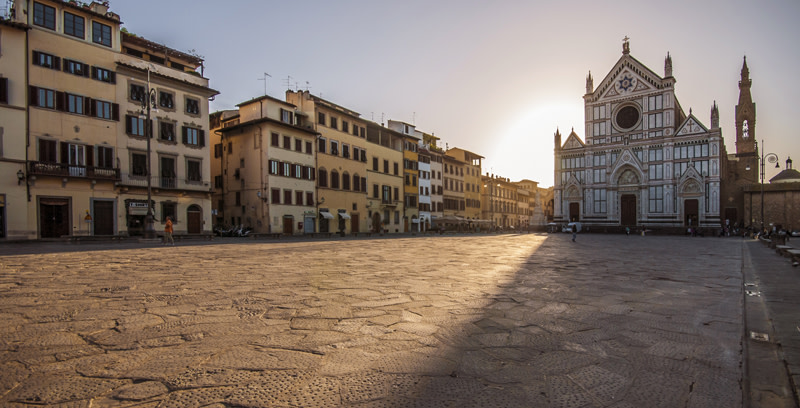 Santa Croce, ph. Lorenzo Cotrozzi
Santa Croce, ph. Lorenzo CotrozziOn the left of the churchyard of the Church of Santa Croce stands the colossal marble statue of Dante Alighieri made by Enrico Pazzi in 1865 on the occasion of the celebrations of the great poet. About ten meters high, the work depicts Dante with a laurel wreath on his head and the book of the Divine Comedy in his right hand. At his feet, four marzocchi, the lions symbol of Florence, hold four shields with the titles of the most famous works by Alighieri.
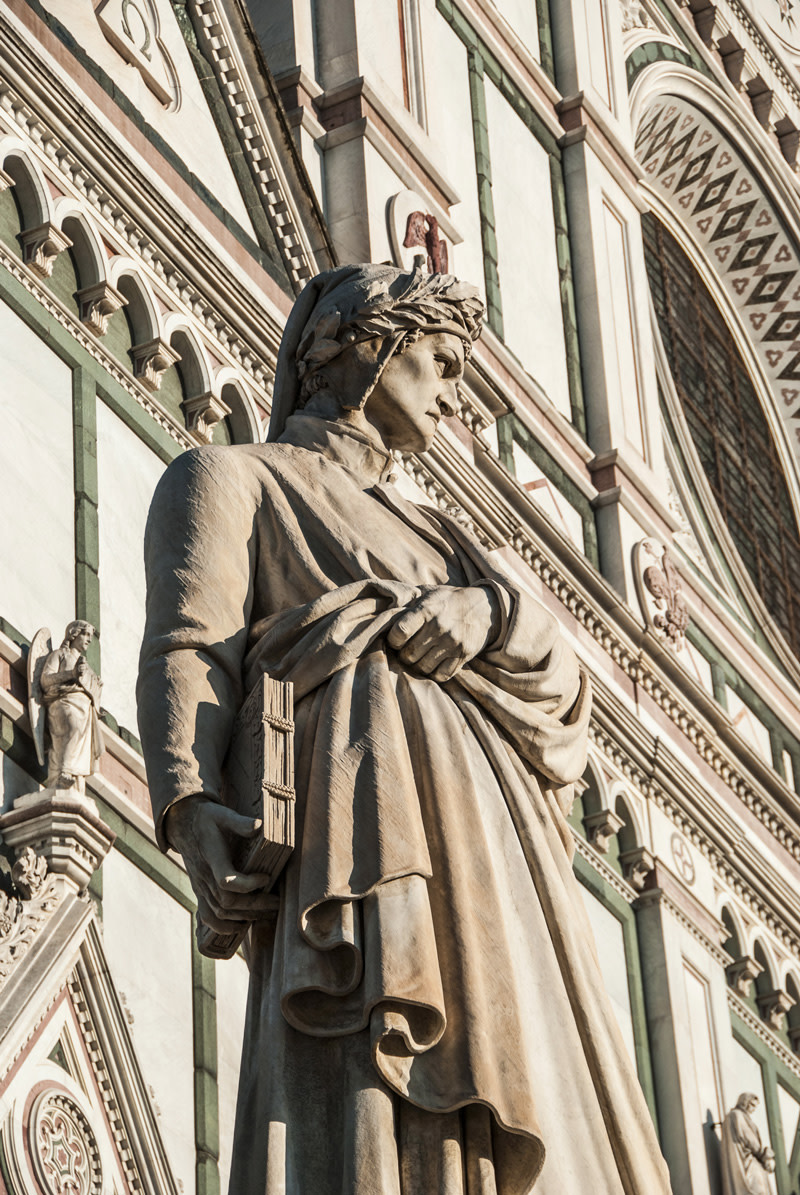 Dante, ph. Lorenzo Cotrozzi
Dante, ph. Lorenzo CotrozziThe splendid fifteenth-century white and green marble facade of the Church of Santa Maria Novella, designed by Leon Battista Alberti, is worth a few minutes of your long walk. In Gothic-Romanesque style, it dates back to the fourteenth century, when it was built as a basilica of the Benedictine monastic complex. Alberti's intervention grafted on the previous gothic structures, but he was able to unify the new and the old part through the use of marble marquetry, derived from the Florentine Romanesque style.
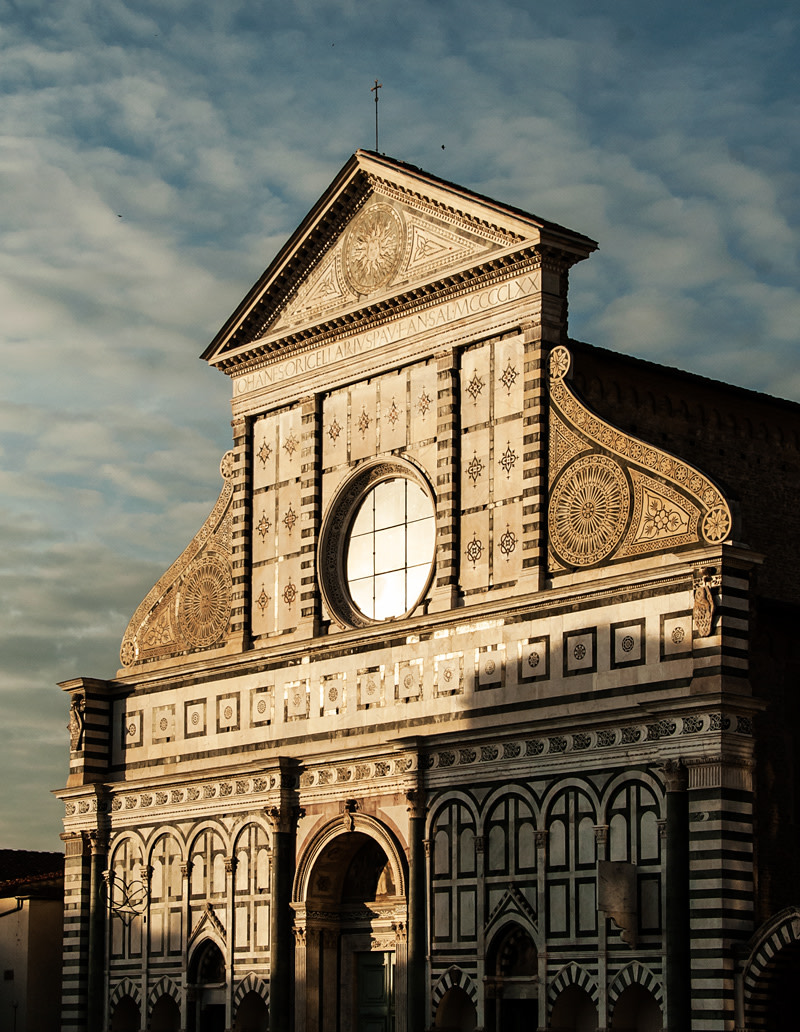 Santa Maria Novella, ph. Lorenzo Cotrozzi
Santa Maria Novella, ph. Lorenzo CotrozziBasilica of San Lorenzo
It was the city's cathedral for 300 years, before it became Santa Reparata. However, it remained the church of Medici and has maintained a considerable importance for the community over the centuries. The facade is a sloping hut, with exposed rough stone on which three arched portals open. The right side is in smooth stone. On this side you can also see the exterior of the New Sacristy by Michelangelo, equipped with a covered dome with flakes, finished by a lantern with marble columns. At the back of the church (with access from the back to Piazza Madonna degli Aldobrandini) there is the magnificent Chapel of the Princes - also called Medici Chapels, the burial place of the Medici - with its large dome which in Florence is the second largest after the Duomo.
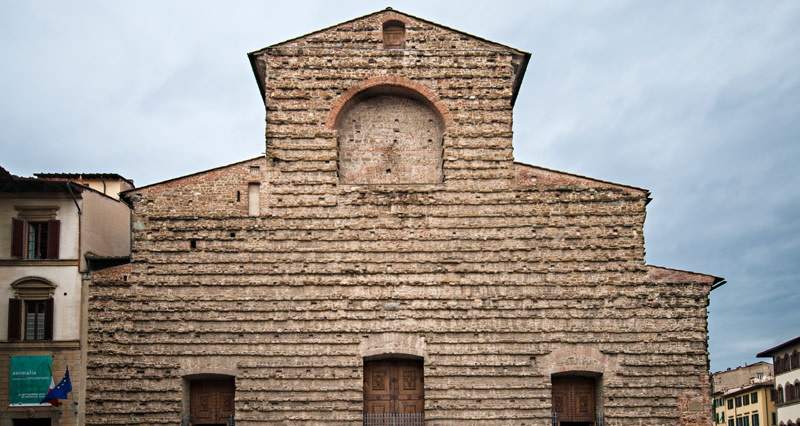 San Lorenzo, ph. Lorenzo Cotrozzi
San Lorenzo, ph. Lorenzo Cotrozzi





